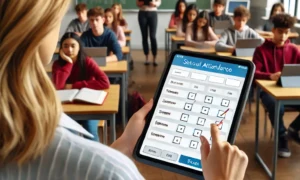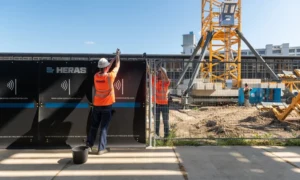Audiovisual (AV) providers play a critical role in enhancing events by leveraging the right technology to create engaging, immersive, and seamless experiences for attendees. Whether it’s a corporate conference, live concert, trade show, or virtual event, the use of cutting-edge AV technology can elevate the overall impact. Here’s a guide on how AV providers can enhance events with the right technology:
- Collaborative Planning and Consultation:
- Needs Assessment: Work closely with event organizers to understand the specific goals, audience, and requirements of the event. Conduct a thorough needs assessment to determine the appropriate AV solutions.
- Collaborative Planning: Collaborate with event organizers, planners, and other stakeholders in the early stages of event planning. This ensures that AV requirements are integrated seamlessly into the overall event strategy.
- State-of-the-Art Audio Solutions:
- Clear Sound Reinforcement: Utilize high-quality sound reinforcement systems to ensure clear and impactful audio throughout the event space. Consider the acoustics of the venue to optimize sound distribution.
- Microphone Technology: Choose the right microphones based on the event format. Wireless, lavalier, or handheld microphones may be suitable for different speakers and performers.
- Audio Processing and Mixing: Implement advanced audio processing and mixing technologies to balance sound levels, eliminate feedback, and enhance overall audio quality.
- Immersive Visual Displays:
- LED Video Walls: Incorporate LED video walls for dynamic and visually stunning displays. These can be used for presentations, branding, and creating immersive environments.
- Projection Mapping: Utilize projection mapping to transform ordinary surfaces into interactive and visually captivating displays. This technology is particularly effective for stage design and enhancing event themes.
- High-Resolution Displays: Install high-resolution displays for presentations, product showcases, and live video feeds. Crystal-clear visuals contribute to a more engaging audience experience.
- Interactive Touchscreen Technology:
- Touchscreen Displays: Integrate interactive touchscreen displays for engaging presentations, wayfinding, and interactive exhibits. These displays can enhance attendee participation and provide valuable information.
- Virtual Whiteboards: Use virtual whiteboards for collaborative brainstorming sessions or interactive workshops. This technology facilitates real-time collaboration and idea-sharing.
- Live Streaming and Hybrid Event Solutions:
- Live Streaming Platforms: Implement reliable live streaming solutions to reach a broader audience, especially for virtual or hybrid events. Ensure high-quality video and seamless integration with other event technologies.
- Virtual Event Platforms: Provide support for virtual event platforms that enable remote attendees to participate fully in the event. This includes interactive features, virtual networking opportunities, and on-demand content access.
- Lighting Design and Control Systems:
- Dynamic Lighting: Create dynamic lighting designs to enhance the visual appeal of the event space. Use color-changing LED lights and intelligent lighting systems to set the mood and complement the event theme.
- Automated Lighting Control: Implement automated lighting control systems to synchronize lighting effects with different event segments, presentations, or performances.
- Audience Engagement Technologies:
- Audience Response Systems: Integrate audience response systems for interactive Q&A sessions, polls, and surveys. This fosters real-time engagement and allows presenters to interact with the audience.
- Augmented Reality (AR) and Virtual Reality (VR): Explore AR and VR technologies to provide immersive experiences for attendees. This could include virtual product demos, interactive exhibits, or AR-enhanced presentations.
- Event Production and Content Creation:
- Multi-Camera Setups: Implement multi-camera setups to capture different angles and perspectives during live events. This enhances the visual storytelling and provides a more dynamic viewing experience.
- Video Editing and Production: Offer on-site or post-event video editing services to create highlight reels, promotional videos, and other content for marketing purposes.
- Wireless Connectivity and Charging Stations:
- Robust Wi-Fi Networks: Ensure robust Wi-Fi connectivity to support the increasing demand for mobile devices, live streaming, and interactive apps. A reliable network is essential for a seamless attendee experience.
- Charging Stations: Provide charging stations for mobile devices to keep attendees connected throughout the event. This enhances convenience and ensures uninterrupted engagement.
- RFID and NFC Technologies:
- Access Control: Implement RFID or NFC technologies for secure access control to different event areas. This enhances security and streamlines attendee movement.
- Cashless Payments: Integrate RFID or NFC for cashless payment systems at event concessions, merchandise stalls, or for other transactions. This improves efficiency and convenience.
- Data Analytics and Insights:
- Audience Analytics: Utilize technology to gather data on attendee behavior, engagement levels, and interaction patterns. This data can provide valuable insights for future event planning and marketing strategies.
- Post-Event Surveys: Implement digital surveys or feedback forms to collect post-event insights and gather feedback for continuous improvement.
- Sustainability Initiatives:
- Energy-Efficient Equipment: Invest in energy-efficient AV equipment and lighting solutions to minimize the environmental impact of events.
- Digital Signage and Paperless Solutions: Use digital signage and paperless technologies to reduce the need for printed materials, contributing to sustainability efforts.
- Tech Support and Training:
- On-site Technical Support: Provide dedicated on-site technical support to address any issues promptly and ensure the seamless operation of AV equipment throughout the event.
- Training Sessions: Conduct training sessions for event staff, presenters, and volunteers to familiarize them with the AV technologies in use. This reduces the likelihood of technical glitches and ensures a smooth event execution.
- Customization for Branding and Themes:
- Branded Content: Customize digital displays, visuals, and interactive elements to align with the event’s branding and messaging.
- Themed Experiences: Tailor AV setups and technologies to complement the event theme, creating a cohesive and immersive experience for attendees.
- Post-Event Content Distribution:
- On-Demand Access: Provide on-demand access to event content, presentations, and highlights through digital platforms. This extends the reach of the event beyond its duration.
- Content Repurposing: Repurpose event content for social media, blogs, and other marketing channels to maximize its impact and reach a wider audience.
In conclusion, the successful integration of AV technology by providers can significantly enhance the overall event experience. By staying abreast of technological advancements, understanding client needs, and fostering collaboration with event organizers, Houston AV providers can play a pivotal role in creating memorable, engaging, and technologically advanced events. The key is to leverage technology in a way that seamlessly integrates with the event’s goals, enhances attendee experiences, and contributes to the overall success of the occasion.






























